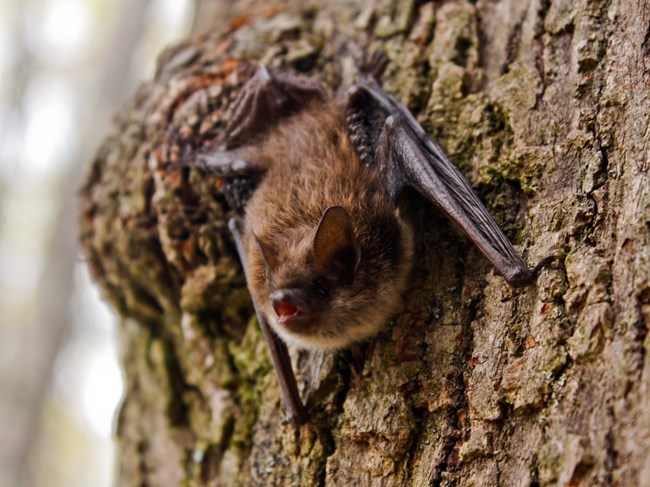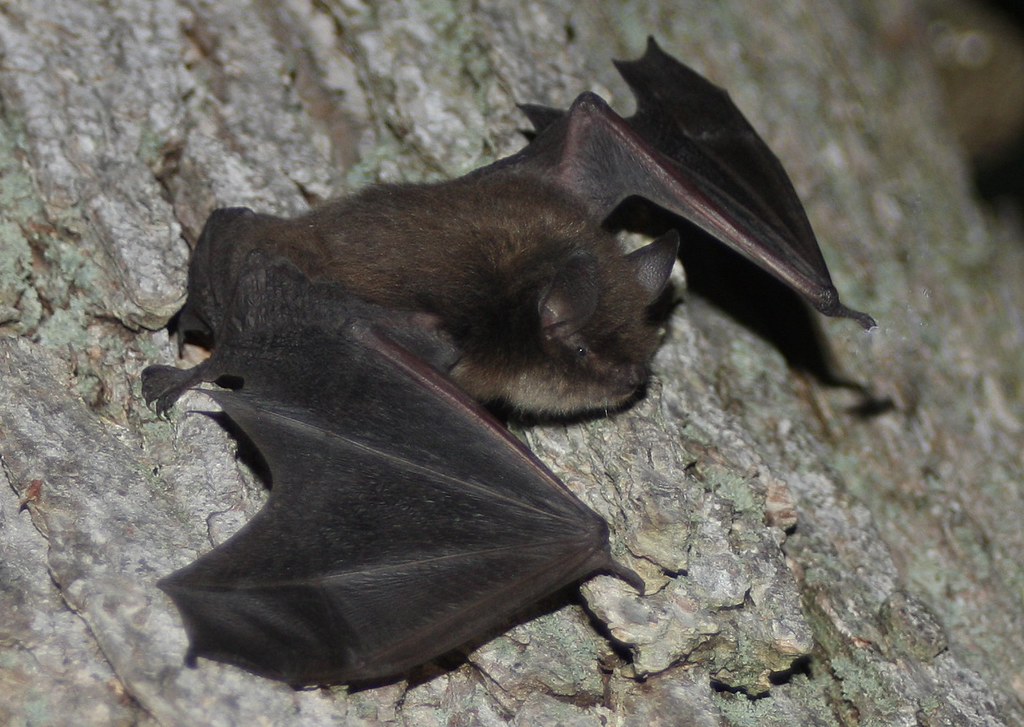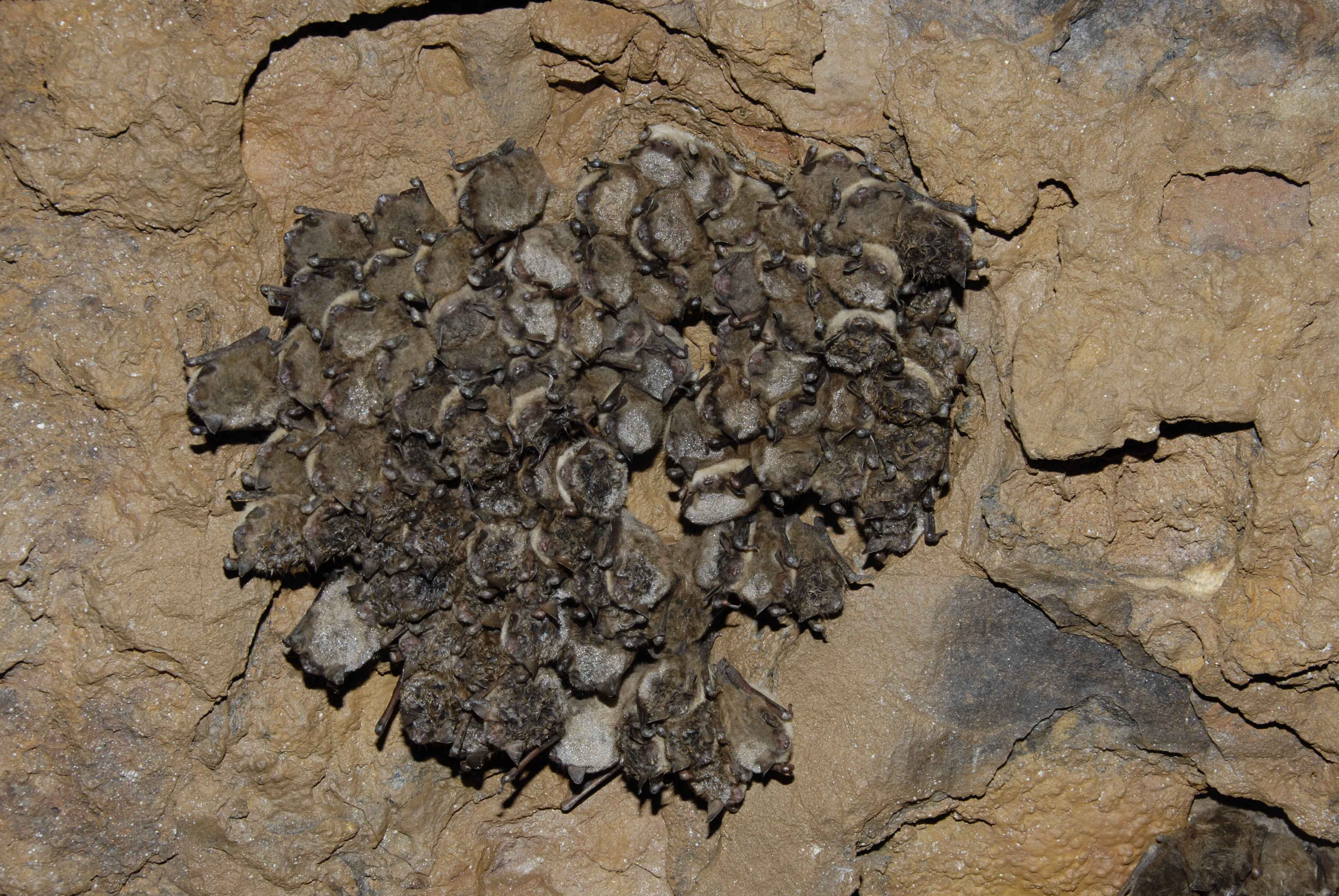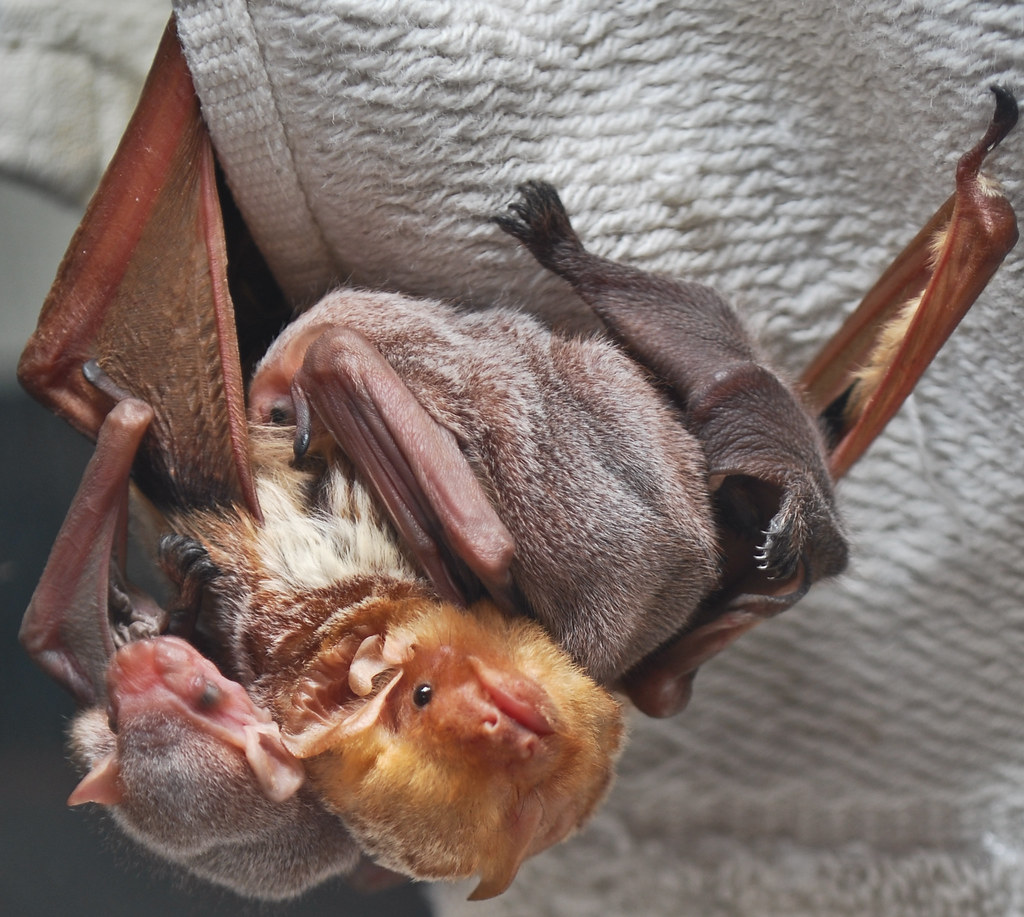Wonders of Wildlife: Little Brown Bat
Little Brown Bat
Other Common Names: Little brown myotis
Scientific Name: Myotis lucifugus
Found in Alabama: Formerly found statewide. Rare in Alabama with no breeding colonies known.
Diet: Carnivore (eats animals) |
Little Brown Bat on Tree
NPS Photo, Erickson Smith
Click on image to enlarge it |
Learn more about...
 Watch our 3-minute video to learn about bat conservation and white-nose syndrome.
Watch our 3-minute video to learn about bat conservation and white-nose syndrome.
YouTube | Vimeo
| CLASSIFICATION |
|
What type of animal am I?
- I am a vertebrate (an animal with a spine or backbone).
- I am warm-blooded, so I can control my body temperature.
- I have hair/fur on the outside of my body that keep me warm.
- I breathe with lungs just like you.
- I have 2 legs.
- I have wings.
|
Scientists use basic traits to group animals into different taxonomic classes.
For a taxonomic classification chart comparing key traits of common backyard wildlife,
CLICK HERE! |
|
| The Little Brown Bat is a MAMMAL! |
| IDENTIFICATION TIPS |
| |
|
|
Size: |
- Reach 3.0 - 3.5 inches in length
- Weigh between 5 and 14 grams
|
Little Brown Bat
Flickr - J.N. Stuart
Click on image to enlarge it
|
| |
|
Key Characteristics: |
- Brown on the back with glossy, metallic looking hair
- Hair on feet extends beyond the toes
- Underside is lighter in color;
- Ears and wings are brown
|
| |
|
|
Juveniles (young): |
- Young are similar in appearance to adults but are smaller in size.
|
| ADAPTATIONS |
| |
| PHYSICAL ADAPTATIONS |
| |
| Little Brown Bats use echolocation: |
- Bats hunt for insects by a process called echolocation.
- During this process, the bats send out a series of high-pitched noises.
- These noises bounce off the insects and back to the bats.
- Bats are able to recognize these sounds and use the information to determine the location of the prey.
- They make different noises for activities such as searching for food, hunting, and social communication with other eastern red bats.
|
| |
| Little Brown Bats can fly: |
- Bats are the only mammals capable of true flight.
- A bat's skeleton is lightweight and has special features for the powerful flight.
- The breastbone contains a keel (a strong bone to which the flight muscles connect).
- They also have a special membrane (thin layer of skin) connecting their long fingers to create the wing. This layer of skin is called the patagium.
- This membrane extends around the bat's tail which is used for steering, braking, and catching insects while flying.
|
| |
| BEHAVIORAL ADAPTATIONS |
| |
| Little Brown Bats are nocturnal: |
- They are active during the night (nocturnal).
|
| |
| Little Brown Bats hibernate: |
- During the colder months, the little brown bat hibernates (becomes dormant as if it is in a deep sleep).
- They typically hibernate in cool, humid caves with a stable temperature.
- The bats can be found hanging from the walls or ceilings in small groups.
- To provide the needed energy to make it through hibernation, they are able to store different kinds of fat in their bodies, allowing them to efficiently produce and retain heat.
|
Hibernating Group of Little Brown Bats
Krynak Tim, U.S. Fish and Wildlife Services
Click on image to enlarge it
|
- Younger bats tend to enter hibernation at a later date because they spend some of their time leading up to hibernation eating extra food to store fat.
|
| |
| Little Brown Bats live in colonies: |
- Little brown bats live in large colonies with up to 300,000 individuals.
- This is beneficial for them as a way to generate heat during colder weather.
- With several individuals in one location, their collective body heat can help raise the surrounding air temperature.
|
| |
| Little Brown Bats communicate with one another: |
- Little brown bats use sounds other than those used for echolocation while foraging.
- They may use these to alert other bats of their presence to avoid collisions while flying.
- Females and pups (baby bats) communicate with each other with additional calls.
|
| LIFE CYCLE |
| |
|
|
| Life Cycle Stages of the Little Brown Bat |
| |
|
|
Nest: |
- Females give birth to the young within a maternal colony where other females also have young.
- Mothers will occupy a nursery roost (place to rest for mothers and young) which is larger than a day roost (place to rest) usually in a tree hollow.
|
Eastern Red Bat with Babies
(Little Brown Bats exhibit this same behavior)
Flickr - Josh Henderson
Click on image to enlarge it |
| |
|
Young: |
- Females usually give birth to one baby per litter.
- The young remain with the mother for around 3 weeks.
|
| |
|
|
Life Span: |
- Average life span is around 10-15 years, but some may live up to 30 years.
|
| NATURAL Habitat Needs |
ADULTS |
YOUNG |
| Food |
- Feed on insects that are active at night including moths, beetles, caddisflies, mosquitoes, and other flies.
- Prefer to forage over water sources such as lakes, ponds, and rivers.
|
- Rely on milk from their mothers for the first three weeks until they are independent and able to forage on their own.
|
| Water |
- Drink from sources of fresh water including lakes, ponds, and rivers.
- If freshwater is scarce, they may drink from condensation (water that collects as droplets) on cave walls.
|
- Get necessary hydration from milk from the mother for the first three weeks until they are independent.
|
| Shelter |
- Use day, night, and hibernation roosts (a place where they rest).
- Day roosts include tree cavities, underneath rocks, crevices of larger rocks, underneath wood and other materials. This provides dark, sheltered places.
- They use the same structures for night roosts but may use a different portion of the structure for night roosting.
- They prefer roost sites near water.
- Hibernation roosts are usually in caves or abandoned mines that stay damp or humid with a constant temperature.
|
| Places to Raise Young |
- The female will occupy a nursery roost (a place for the mother and young to rest) with the pup (baby bat) while they are dependent on milk from the mother.
- These roosts are usually located in tree hollows.
- The young will hang on to the mother while she moves around from roost to roost.
|
|
BACKYARD
Habitat Needs |
ADULTS |
YOUNG |
| Food |
- Do not use pesticides or herbicides that might negatively impact insect populations.
- Plant native grasses, wildflowers, and other plants to provide a food source for beetles, flies, and moths.
|
- Providing resources for the adults indirectly supports the young as they rely on the milk from the mother for the first three weeks until they are independent.
|
| Water |
- Provide a bog or pond.
- If a freshwater source is not located nearby, include a bird bath or fountain.
|
| Shelter |
- Do not remove tree snags (dead trees) or hollowed out trees.
- Do not remove stumps and rocks.
- Provide leaf litter and other debris that might be used as a day roost.
|
| Places to Raise Young |
- Do not remove large hollowed out trees.
|
|
| ECOLOGICAL ROLE |
| |
|
| Animals play an important ecological role in the health of habitats and ecosystems. |
| |
|
|
Food Source:
|
- The little brown bat provides a food source for mice, weasels, raccoons, hawks, owls, and snakes.
|
| |
|
Insect Control: |
- Little brown bats are insectivores (eat insects) and consume a large number of night-flying insects.
- They can consume up to half of their body weight in insects each night.
- Bats are beneficial to humans because they help control populations of insects such as mosquitoes which can carry diseases like West Nile and malaria that can be passed to humans.
- Bats also play a role in controlling populations of insects that cause damage to crops.
|
INFORMATION SOURCES FOR THIS SPECIES
|
|
|
|
| |
|
|
|
|
|
|
| |
|
|
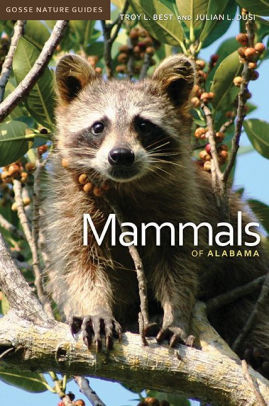 Best, T. L. and J. L. Dusi. 2014
Best, T. L. and J. L. Dusi. 2014
Mammals of Alabama.
The University of Alabama Press. |
|
|
.





 Wildlife Tag
Wildlife Tag
